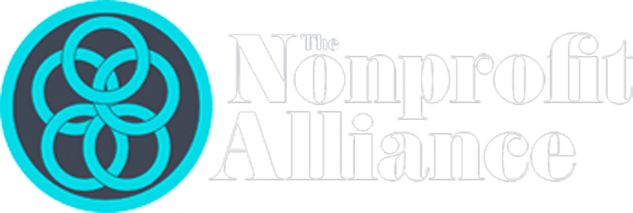Increasing Resilience and Thriving in Uncertain Times
The past 18 months have been challenging for humanity as we face an onslaught of uncertainty caused by Covid-19 and its domino impact on our physical, mental, and emotional lives. While it is impossible to ensure that everyone thrives during a crisis, it is possible to support a substantial majority to navigate these uncertain times more effectively. Presented below are some ideas that we at the Lincoln Institute of Land Policy tried out in our efforts to create a learning and thriving organization.
Be willing to fail
 After the first quarter of navigating the pandemic, we started experiencing digital meeting fatigue much like the rest of the connected world. As a result, we instituted meeting-free Fridays to help balance the fatigue. What we did not account for at that time was the FOMO (Fear Of Missing Out) phenomenon and how it affected employees’ ability to regulate workplace behaviors. Our staff continued to meet without any Leadership team members being invited to those meetings. When we realized this was happening, we scrapped this policy. However, our CEO had introduced our organization to Emergent Learning and this enabled us to dissect our experience and move us forward productively. We were able to analyze what worked and what did not with our failed attempt at providing a healthier workplace for all of us. This led us to our next experiment.
After the first quarter of navigating the pandemic, we started experiencing digital meeting fatigue much like the rest of the connected world. As a result, we instituted meeting-free Fridays to help balance the fatigue. What we did not account for at that time was the FOMO (Fear Of Missing Out) phenomenon and how it affected employees’ ability to regulate workplace behaviors. Our staff continued to meet without any Leadership team members being invited to those meetings. When we realized this was happening, we scrapped this policy. However, our CEO had introduced our organization to Emergent Learning and this enabled us to dissect our experience and move us forward productively. We were able to analyze what worked and what did not with our failed attempt at providing a healthier workplace for all of us. This led us to our next experiment.
Incorporate learnings from failure into the next initiative
In retrospect, I am glad we failed in our meeting-free Fridays initiative as it freed us to be even bolder in our efforts to support an engaged and energized workforce. In September 2020, we started a compressed work week experiment where staff could work longer hours from Monday to Thursday and have Fridays free to themselves. While this was a radical move at the time for us as an institution, it proved immensely popular among our employees. This also solved our earlier problem of staff feeling like they would miss out on important meetings if they did not work on Fridays. Initially, we launched it as an experiment for that quarter to make it easier for everyone to get onboard with the experiment with the understanding that the facility would be extended or terminated based on employee feedback at the end of the quarter. The employee survey found that 98% of our staff favored the compressed work week arrangement and wanted it to be made permanent. Employees also reported greater mental and emotional well-being because of this initiative. So, in December 2020, we extended the compressed workweek facility till such time we came back into our offices.
Support Mental Health
Some months into the pandemic, we started noticing some of our colleagues struggling with remaining mentally healthy. This impact was more pronounced for those colleagues who were more isolated than others. We had one of our HR team members call individual staff to check if they needed anything. This helped in unambiguously communicating that we were willing to go the extra mile to help our employees access resources that they needed to be healthy and whole.
We also organized meditation sessions that were run by professionals who helped disseminate meditation practices that staff could use to reduce stress and achieve better balance in their lives. We also reinforced the access to therapists that was already available to us through our Employee Assistance Programs. Keeping the communication channels open with our employees enabled us to better support them through this ongoing crisis.
Our Board Chair and CEO were also very explicit in all staff meetings about staff taking time for care for their personal, physical, and mental health whether that involved taking a walk in the middle of the day or baking brownies or doing a meditation session. Employees appreciated this sort of explicit advocacy from senior leadership about prioritizing health and wellness.
Provide greater certainty to reduce anxiety
At the onset of the pandemic, we had been providing information to our staff about the upcoming quarter on a rolling basis so they could arrange their work and personal schedules. While this was sufficient in the initial days of the pandemic, we realized that this was not sufficient as the pandemic progressed with new variants and no end in sight. When there is increased uncertainty in the wider world, it is always helpful to provide some stability in working conditions to decrease stress and increase resilience.
So, in July 2021, we decided that all our employees needed to be withing striking distance of one of our offices by 30 June, 2022. This enabled all those employees who had moved around the US to other locations during the pandemic the ability to plan their eventual return to our offices. This also had the added benefit of increasing certainty for parents contemplating which school system their kids could be enrolled in for the academic year starting September 2021.
Conclusion
We are unfortunately still amid the global pandemic caused by the Covid-19 and exacerbated by supply chain shocks and the real estate crisis. At least in the US, we can be cautiously optimistic about the situation getting better with the overall decrease in cases at a national level in October 2021. Globally, the situation is more mixed and there is greater cause for concern. Organizations that have weathered this crisis and, dare I say, thrived during this time, are those that prioritized employee wellness, demonstrated a willingness to experiment, and used data-based decision making to pivot rapidly in response to an ever-changing environment. Organizations that display these learning behaviors will gain a tangible edge in the hunt for talent that will formulate products and policies that create a better world for all of us.




